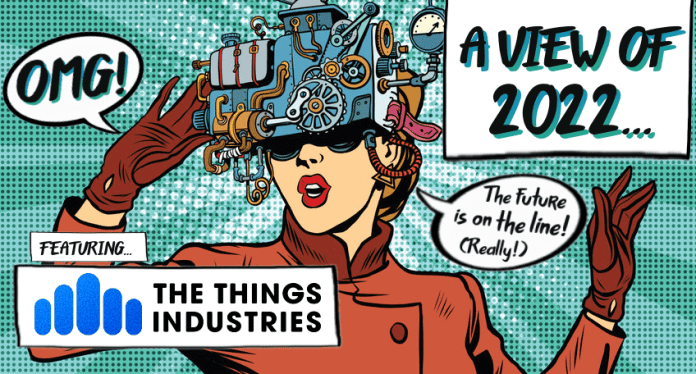There is a change in the IoT industry, and it has to do with the convergence of two other big developments. The first is the ongoing adoption of the cloud; the second is the rise of the enterprise developer using low-code/no-code software. Combined, these trends bring about two critical advances for IoT: cloud lowers both the IT costs and the IT risks for running IoT management and security software in the cloud; low-code/no-code helps to build the IoT bridge into ongoing automation of business processes. Let’s look at both of these things, starting with the adoption of the cloud.
Three years ago, we would often get questions about on-prem hosting of network management and IoT software. Those questions have reduced 10-fold since then – because everybody understands that, unless you are a very well organized IT company, hosting servers and managing an operating system is dangerous. It leaves you exposed to a lot of cyber risks. The other result of this move to the cloud is that DevOps costs are, on average, 10-times cheaper. Trust in cloud computing has also increased because of the use of open source. Microsoft’s pledge that you can move back to bare metal, in the unlikely event you wish to do so, is an example of that trust-building.

By turn, with the low-code/no-code revolution, every cloud or ERP now allows you to build small enterprise apps that do simple automations with very little IT knowledge, or indeed with very much effort. Low-code/no-code is at a stage now where you do not even have to ask your procurement department – it comes with your cloud enterprise account or ERP system, such as with AWS Honeycomb, Microsoft Power Apps, Mendix, ServiceNow, and so on. The likelihood is that you, as an enterprise, are only one click away from a low-code/no-code platform.
And we see synergy between these cloud and low-code/no-code migrations and the IoT components that are already in the market. Again, three years ago, we would have a customer celebrate the fact the data they had gathered from IoT sensors had ended up in a dashboard. Great accomplishment! But the bar is now higher; nowadays, if that is the deliverable goal of your IoT efforts, then your project has failed. Why? Because it means you have not found anyone that wants to use that data in their business automation or IT systems.
IoT needs to go full circle. And full circle means directly injecting that data, or the results of the data analysis, into enterprise business processes via the correct enterprise business applications. So your temperature monitoring should directly generate a report that conforms with the right Word template, for example, that your local authority uses – and it should be mailed to the right compliance officer, without them requiring a separate login and password. Or, the humidity levels inside the ventilation system in a real estate property should directly trigger a task in a field force management system for housing maintenance staff.
You get the idea; full-circle IoT automation should remove manual steps. Because the IoT software stack now runs smoothly in the cloud without much in the way of DevOps, so the IoT devices can start to deliver on the grand promise of IoT, and new enterprise apps can be devised or extended in just days using low-code/no-code platforms at your fingertips.
This massive rationalization in the IoT stack is what makes enterprise customers happy. IoT should be considered like a simple micro service, which injects the right data at the right place using the IT systems you already have – plus the IT security governance and IT architecture you have already implemented and the IT staff you have already trained. IoT should not require a platform provider or consultancy company, which ultimately only wants to lock you into its closed ecosystem.
The pieces are now in place, as we move into 2022. You already own the perfect IoT stack. We have never been so confident about IoT. The industry is now in position to start to deliver on its promise of industrial and societal change.

